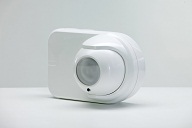Smoke Detection Beams
Home > VESDA ® > Beams



Beam Detection
 Fire alarm beam detection has always been a hit and miss device. Conventional fire alarm beams work on the principle of obscuration over line of sight. There are a number of draw backs with this smoke detection technology:-
Fire alarm beam detection has always been a hit and miss device. Conventional fire alarm beams work on the principle of obscuration over line of sight. There are a number of draw backs with this smoke detection technology:-
Smoke has to interrupt the beam itself. Smoke that is present on either side of the beam detector remains undetected until enough smoke accumulates and obstructs the beam between the transmitter and receiver.
Due to this narrow beam of smoke detection, alignment can fall out on alighn with building movement, vibrations, temperature fluctuation etc.
To compensate for this, some smoke detector beams have auto alignment technologies, but these are limited and only allow marginal movement varients.
In addition to this, building vibrations are one of the main reasons why beam smoke detectors will fall into alarm. The reason for this is that the beams see the shimmer of the reflector plate or transmitted light as being interrupted by smoke, exactly what the beam sets are looking for when fire is present.
Standard fire alarm beams are also extremely sensitive to birds flying at high level within the protected space. This can only cause a fault, however it can raise problems diagnosing the cause of the fault if the birds are not present when the fire alarm engineer arrives onsite.
Other household bugs can also cause beams to alarm. Spiders often spin their web over a beam set which causes fault alarms and faults.
Oper-Area Smoke Imaging Detection
 OSID smoke detection is a new technology that irradicates the problems that exist in convention smoke detection beams. The latest laser technology within this devise uses both Infra-Red and Ultra Violet sensors. By utilising this technology it allows the OSID smoke detector to distinguish the effects of smoke by comparing smoke detection between the two light forms.
OSID smoke detection is a new technology that irradicates the problems that exist in convention smoke detection beams. The latest laser technology within this devise uses both Infra-Red and Ultra Violet sensors. By utilising this technology it allows the OSID smoke detector to distinguish the effects of smoke by comparing smoke detection between the two light forms.
In addition to this, OSID does not rely on a line of sight. It is an imaging device that has a peripheral view of the are its protecting, so it has a broader view. Like traditional beam sets, OSID still requires at least one emitter (transmitter) and one receiver (Imager), however uses only one imager for up to six imagers.
When OSID detection is initially commissioned, the imager will provide a visual display of the area it is protecting on the engineers laptop computer. This provides the engineer a clear view of what obstructions and other potential issues that may exist.
For more information on OSID smoke detection, please click here